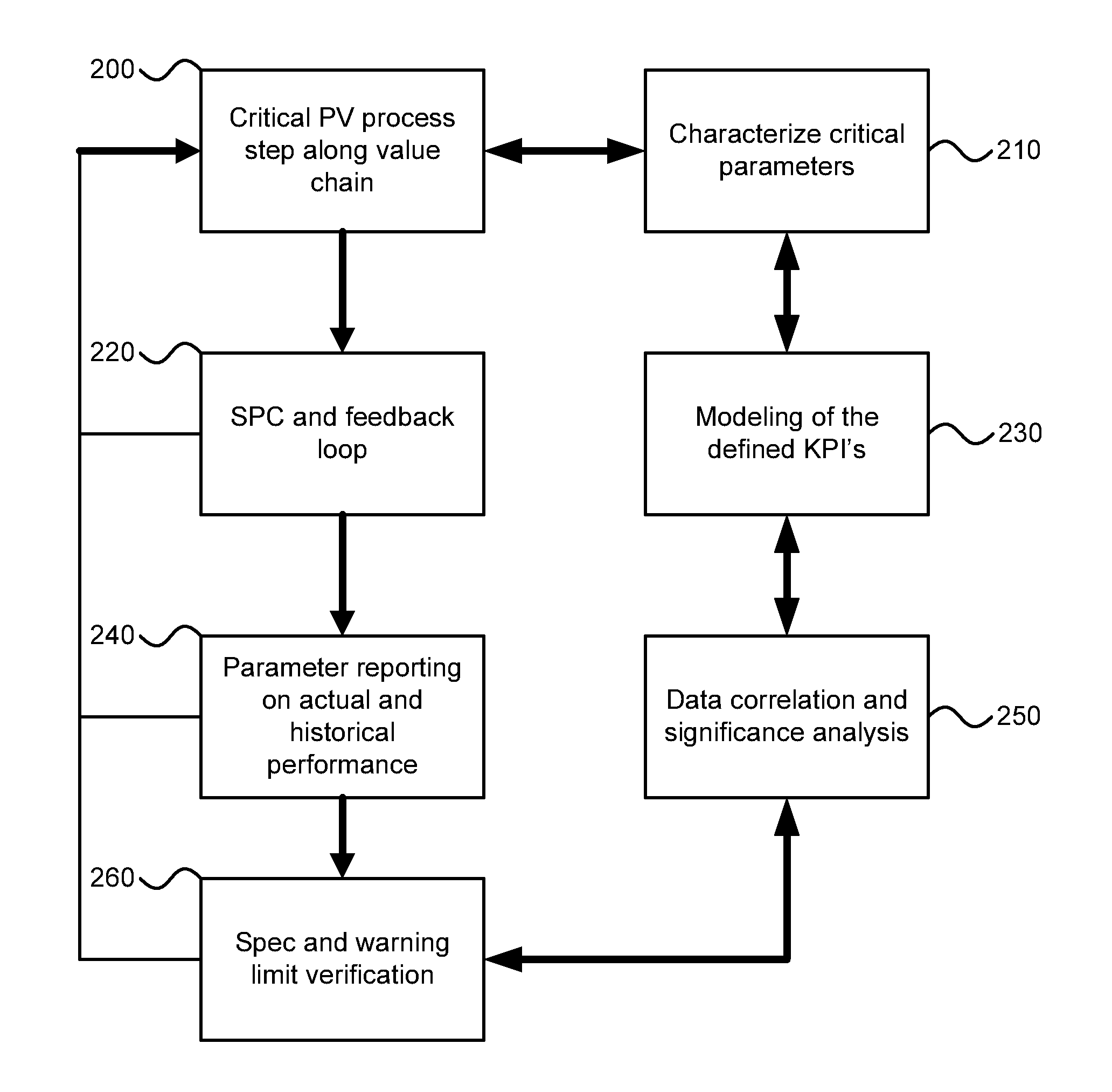Managing a performance of solar devices throughout an end-to-end manufacturing process
a solar device and manufacturing process technology, applied in adaptive control, instruments, computing, etc., can solve the problems of inability to predict the performance of a solar device, inability to adapt a manufacturing process, and inability to achieve the initial quality of raw wafers
- Summary
- Abstract
- Description
- Claims
- Application Information
AI Technical Summary
Benefits of technology
Problems solved by technology
Method used
Image
Examples
Embodiment Construction
[0041]Referring now to FIG. 1, a flowchart of a method for managing a performance of solar devices throughout an end-to-end-manufacturing process consisting of multiple manufacturing process steps is shown.
[0042]The method starts in step 10 with determining a plurality of key performance indicators (KPIs) for solar devices. The KPIs can be any suitable indicators applicable to a manufacturing process of solar devices, e.g. based on prior knowledge on similar manufacturing processes. Typical KPIs are front surface velocity (FSV), carrier life time (CLT), rear surface velocity (RSV), external front reflection (EFR) n-doping, p-doping or wafer thickness.
[0043]In step 20, a change behavior of KPIs is determined throughout manufacturing process steps for manufacturing solar devices. According to FIG. 2, a set of KPIs comprising the afore-mentioned is listed in a table versus different manufacturing process steps. For each manufacturing process step, the impact on this step on the respect...
PUM
 Login to View More
Login to View More Abstract
Description
Claims
Application Information
 Login to View More
Login to View More - R&D
- Intellectual Property
- Life Sciences
- Materials
- Tech Scout
- Unparalleled Data Quality
- Higher Quality Content
- 60% Fewer Hallucinations
Browse by: Latest US Patents, China's latest patents, Technical Efficacy Thesaurus, Application Domain, Technology Topic, Popular Technical Reports.
© 2025 PatSnap. All rights reserved.Legal|Privacy policy|Modern Slavery Act Transparency Statement|Sitemap|About US| Contact US: help@patsnap.com



